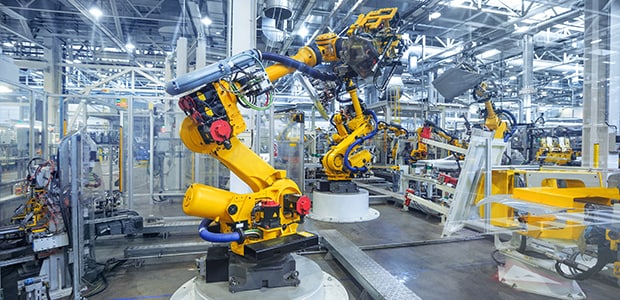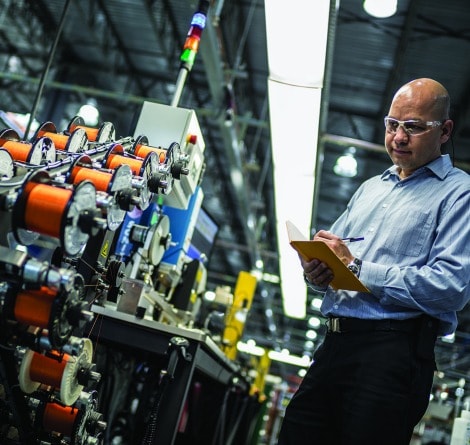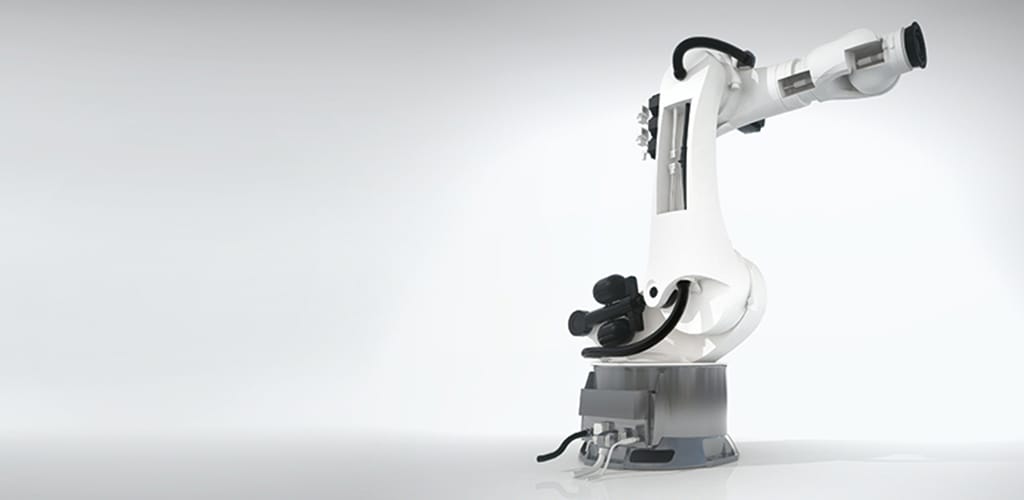
Trend Insight
A Sense for Innovation
Sensors and sensor infrastructure are transforming how robots operate in digital factories. By: Daniel Walldorf, Project Manager, Innovation Platforms & Ventures
Robots are taking center stage as more factories transition into digitally smart environments. Efficient digital factories optimize human-robot interactions, where the robots help humans easily perform cumbersome and time-consuming tasks. But using robots comes with many challenges, particularly around operating manufacturing processes that require accuracy and efficiency. This automation challenge is giving rise to a greater need for sensor-equipped robots that are capable of quickly performing manufacturing tasks while ensuring the safety of the humans working close by. Controlling the robot movements by sensors – built in and attached to – the robot is a crucial step in providing the flexibility needed to accommodate variances in human activity. As a result, sensors help ensure that robots can effectively detect the exact position of a manufactured object, which in turn informs the robot’s performance.


Configured for Harsh Environments
When creating this type of connection and detection system for automation devices, our team of engineers at TE look for opportunities to improve process precision – as well as reduce processing time. On a robotic gripper, this could mean, for example, using a connectivity solution that allows the gripper to turn in one direction continuously (if this is an operational requirement) and eliminates inefficient processes that could include stopping the operation after each cycle so as to turn the gripper back to its starting position.
The engineering challenge is configuring a robotic system that can perform the necessary steps without fail and within the fast-paced and harsh environment of a modern factory. Because these environments are often oily and dusty – and often operating 24/7, and running millions of operation cycles, the manufacturing system must deliver reliable, continuous connectivity while requiring very little maintenance over extended periods. In particular, the system must offer high resistance to the daily wear and tear of production.
Sensors help ensure that robots can effectively detect the exact position of a manufactured object.
- Daniel Walldorf,
- Project Manager, Innovation Platforms & Ventures

Enabled for IoT Applications
Considering that – as we are observing – more robot tools, especially grippers, are electrically operated, as opposed to the conventional pneumatic system, digital factories require greater levels of power to effectively operate electric gripper. In our work in developing automation solutions, the engineers on our Advanced Technology team have developed a system which makes it possible to transfer energy and data over an air gap of several millimeters. With automation technology, manufacturers can equip their factories to operate reliably, in any production environment, regardless of the extreme conditions that the production processes generate.


